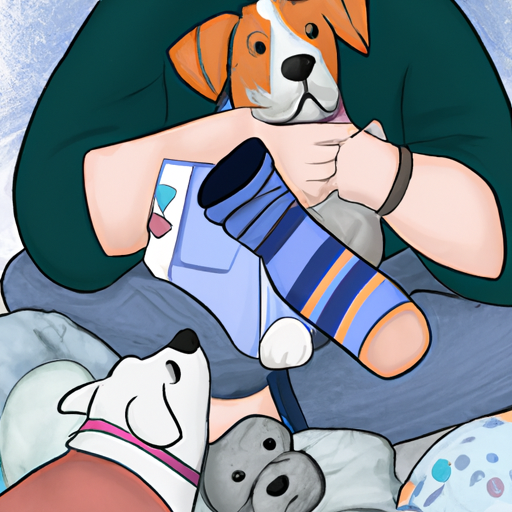Understanding Separation Anxiety in Dogs
Firstly, it’s important to understand what separation anxiety in dogs entails. This condition is not a result of disobedience or lack of training; it’s a panic response. Your dog isn’t being “bad” when he reacts to your absences – he’s terrified. Your dog exhibits behaviors that reflect his anxiety, which could include:
- Destructive behavior, such as chewing and scratching
- Excessive barking or howling
- Trying to escape
- Pacing in a fixed pattern or path
- Coprophagia, or the consumption of feces
Recognizing the Signs of Separation Anxiety
Dogs can’t tell us when they’re feeling stressed or anxious. It’s up to you, as their caregiver, to recognize the signs. Some signs of separation anxiety in dogs include:
- Excessive salivation or drooling
- Increased heart and breathing rates
- Pacing or trembling
- Destructive behaviors
- Excessive barking or howling
If you notice these signs, it’s crucial to take action to help your pet.
Strategies to Alleviate Anxiety
There are several strategies you can employ to help alleviate your dog’s separation anxiety:
-
Gradual Desensitization: Gradually accustom your dog to being alone. Start by leaving him alone for just a few minutes, then gradually extend the time. This can help him understand that you will always return, reducing his anxiety.
-
Calming Products: There are many products available that can help calm your dog. These include anxiety wraps, calming music, and pheromone diffusers.
-
Exercise: Regular exercise can help alleviate anxiety in dogs. Provide plenty of physical and mental stimulation to help keep your dog calm.
-
Seek Professional Help: If your dog’s anxiety is severe, you may need to seek help from a professional dog trainer or behaviorist.
Implementing a Routine
Structure and routine can provide a great deal of security for anxious dogs. Consider the following routine:
| Time | Activity |
|---|---|
| Morning | Walk and playtime |
| Mid-morning | Quiet time in a comfortable space |
| Afternoon | Mental stimulation (puzzle toys, training) |
| Evening | Walk and playtime |
| Night | Quiet time and sleep |
Frequently Asked Questions
Q: Can separation anxiety in dogs be cured?
A: While there’s no guaranteed cure, many dogs can be helped with the right strategies and patience.
Q: What causes separation anxiety in dogs?
A: It’s not fully understood, but factors like genetics, environment, and traumatic experiences can contribute.
Q: Can I prevent separation anxiety in my puppy?
A: Yes, by gradually teaching your puppy to be comfortable alone, you can help prevent separation anxiety.
Remember, every dog is different, and what works for one might not work for another. It’s crucial to be patient and persistent. With time and effort, you can help your dog feel more secure when you’re not there.



